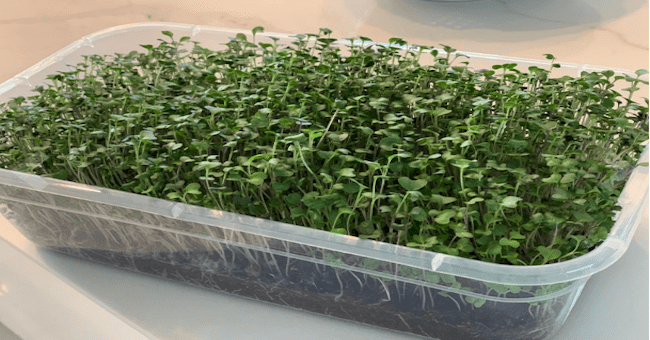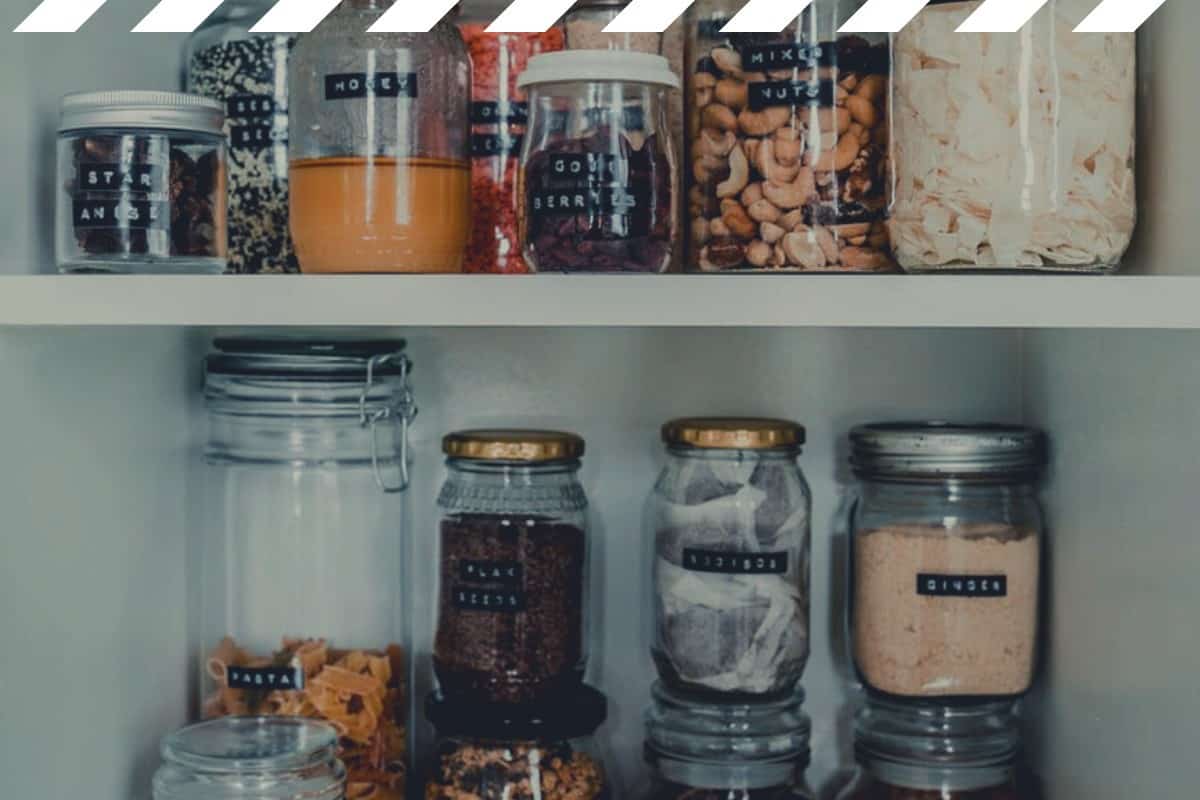Microgreens are miniature versions of well-known vegetables that can be grown in a spare bedroom or kitchen. They are in high demand because they are packed with nutrients, delicious, and add a lot of flavor to meals. The downside is that they can be expensive depending on the variety. The good news is you can grow your own microgreens at home with just a few supplies and some patience. We’ll talk about what microgreens are, their benefits of them, and how you can grow microgreens in your spare bedroom or kitchen.
What Are Microgreens?
Microgreens are miniature versions of full-sized flowers, plants, and vegetables. They are edible seedlings that are cultivated and allowed to grow until they have started to develop their first true leaves, at which point they are utilized in a variety of ways: as star ingredients in recipes, colorful garnishings on the side of dishes, or added to juices and smoothies. In scientific terms, a plant is classified as a microgreen at the point when the embryonic leaves (also known as the cotyledon leaves) have fully developed and the first signs of the “true leaves” are emerging and visible.
At this stage of development, microgreens tend to measure between two and three inches in length. But this is where the similarities between different microgreen varieties end, as microgreens exist within an enormous range of colors, flavors, textures, health benefits, and nutritional values. Microgreens are a versatile and nutritious addition to any diet!
There are even claims that microgreens contain as much as 40 times the concentration of nutrients compared to their full-size plant counterparts.

Why Should I Eat Microgreens?
The more that I learn about microgreens, the more I realize how beneficial they are. Not only are they incredibly easy and fun to grow, but they offer a world of health benefits and can be used in endless ways in the kitchen. Here are some of the main reasons why I believe that everyone should make room for microgreens in their diet:
They Are Packed With Nutrients
There are studies that have shown that microgreens varieties have as much as 40 times the nutritional content compared to normal vegetables. One study of this is the broccoli microgreens compared to adult broccoli where the microgreens offered 40 times the nutrients. The broccoli microgreen also contains sulforaphane, a powerful cancer-fighting phytochemical.
Microgreens Have Unique & Intense Flavors
Microgreens aren’t just plain tasting like certain veggies you might have had. They come in a variety of flavors that can range from very sweet to bitter, spicy or even nutty. If you’ve been tired of “blah” meals, adding microgreens can change the dish.
A Variety of Uses
Most people think only of sprouts when they hear about microgreens. To be honest, before I started doing the research for this article, I thought they were all just sprouts. They aren’t just for adding color to a dish. They add a lot of flavors as well as the high nutritional value I mentioned above. You can use microgreens for everything from soups, salads, and smoothies and even use them in certain desserts.
What Vegetables Can Be Grown As Microgreens?
Some of the most common vegetables can be grown as microgreens:
- Basil
- Cilantro
- Broccoli
- Sunflower
- Kale
- Radish
- Pea
There are hundreds of other varieties that can be grown that you might not have ever heard of. I personally hadn’t heard of the majority of them until I started to research them more.
Why Should I Grow Microgreens?
One of the easiest explanations for why you should grow microgreens is because of how fast their lifecycle is. Most microgreen varieties are able to progress through all of their stages of development – from germination to harvest – in less than ten days. All of the microgreens we’ll talk about here can be ready to be harvested within 21 days.
That means you can start to grow your own food relatively quickly. Another benefit of growing microgreens is that they are a highly sought-after ingredient in the culinary world. Many chefs need these microgreens for their recipes and if you choose to grow a commercial amount of microgreens, you can even make a pretty penny selling them to high-end restaurants and cafes.
Are Microgreens The Same As Sprouts?
No, microgreens and sprouts are different. Sprouts are just seeds that have begun to grow but haven’t started to develop leaves. Microgreens have grown further than the sprout stage and have fully developed embryonic leaves, along with the first signs of the next set of leaves, aka the “true leaves.”
Microgreens start as seeds and move through the sprout stage before they become microgreens. Another big difference between the two is that sprouts are eaten whole, which includes the whole root system and seed. Microgreens are harvested by cutting the plant stem away from the root system.
Sprouts are also grown with only water. Microgreens are grown using a medium like soil or coconut coir. Microgreens can also be grown hydroponically.
What Equipment You Need To Grow Microgreens
Microgreens don’t require a lot of equipment or space to get started. Here’s a list of what you’ll need:
Growing trays:
Pretty much any tray can work for this, but the most popular dimensions for growing microgreens are trays that are 10 inches by 20 inches by 1 inch. You don’t want to get a tray that is deeper than 1 inch, because you’ll waste a lot of soil filling up the tray. The trays also need to allow for drainage, many pre-designed microgreen trays come with drainage holes already in them. Most growers will place a tray with holes inside a tray without holes.
Lights
While natural sunlight is always the best for growing microgreens, it’s a good idea to have at least one backup artificial light source. This makes sure that your crops won’t suffer from poor lighting, especially during winter months, or if you live in an area without great sunlight year-round. It’s difficult to give a specific answer for the perfect lights for growing microgreens. Don DiLillo from FinestFoodsNY.com said that the best artificial lights you can get are called T5 Full Spectrum Flourescent Lights.
Nutrients
A nutrient solution is optional, but many growers choose to add hydroponic-type nutrients to their water source, even when they aren’t growing hydroponically. It will have a positive impact on your harvest.
How Should You Harvest Your Microgreens?
There seems to always be a little bit of debate between cutting any type of plant with scissors or knives. Microgreens should be harvested using a sharp knife. Scissors aren’t as clean of a cut which can lead to the crop rotting faster.
What Kind Of Seeds Do You Need?
You don’t want to be cheap with this choice. Seeds are the most important part of this. You want to find a supplier who has good-quality organic seeds. If you end up turning this into more than just a hobby, you’ll want to make sure that you compare prices often to make sure you’re getting the best deals possible. When it comes to running a business, you need to know your profit margins to make sure it’s profitable.
What Kind Of Soil Do You Need?
If you’ve decided to use soil, it’s good to get a high-quality potting mix. You don’t need to go too crazy with it, just get a high-quality mix.
Should I Get A Microgreens Kit To Start?
Honestly for most of us, getting a kit is the best starting point. There is a great Microgreens Growing Kit from Window Garden Store that has everything you need to get started.
If you don’t want to get a kit, you can put together your own. You’ll need:
- 10 by 20 inch growing tray, 1 inch deep
- Lid for the tray (this helps to retain moisture and humidity)
- High-quality potting mix or soil
- Organic microgreen seeds
- T5 Full Spectrum Fluorescent Light (optional)
- Light stand or other way to support the light over the tray
- Timer (optional)
In conclusion, growing microgreens is a fun and rewarding hobby that anyone can do. All you need is some basic equipment and supplies, and you can get started today!






